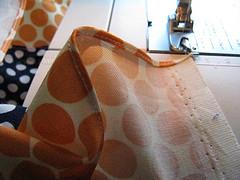 The glass does not only have to be thought as a functional material to leave the light in an area, but also it can be used to add decorative effect. But it is important to choose the certain type of glass for the certain place so that the final work is efficient, attractive and safe. The wrong type of glass used in the wrong position can be unsatisfactory and to present a serious risk for the personal security. Types of glass Have a number of different types of glass, in a series of standards and tonalities, and are important to decide which more are adjusted for one determined work. ComumEsse glass glass is made passing the glass melted through coils, this process of the one almost plain finishing, but the effect of the coils on the melted glass make some inevitable distortion. The glass can be used in windows etc internal, but the relatively low cost of the glass float (with its lack of distortion) tends to restrict the simple leaf glass for glasses of greenhouses and sheds garden where the visual distortions, do not matter.
The glass does not only have to be thought as a functional material to leave the light in an area, but also it can be used to add decorative effect. But it is important to choose the certain type of glass for the certain place so that the final work is efficient, attractive and safe. The wrong type of glass used in the wrong position can be unsatisfactory and to present a serious risk for the personal security. Types of glass Have a number of different types of glass, in a series of standards and tonalities, and are important to decide which more are adjusted for one determined work. ComumEsse glass glass is made passing the glass melted through coils, this process of the one almost plain finishing, but the effect of the coils on the melted glass make some inevitable distortion. The glass can be used in windows etc internal, but the relatively low cost of the glass float (with its lack of distortion) tends to restrict the simple leaf glass for glasses of greenhouses and sheds garden where the visual distortions, do not matter.
Glass leaf it can be cut of a glass cutter and no special equipment is necessary. The glass is frequently available in the sizes standard to take care of ' standard' greenhouses, these sizes comparativily tend to be cheaper of what the glass cut to the measure. The glass float (plate) the glass float receives its name from the method from production used to manufacture it. The casting glass ' ' flue' ' on a stream bed of I tin casting – this produces a glass that is plain and without distortions. The glass float can be cut with a glass cutter and no special equipment is necessary. The glass float is adjusted for fixed windows and opening above of the height of the waist.